
The Salon du Tapis d'Orient is a moderated discussion group in the manner of the 19th century salon devoted to oriental rugs and textiles and all aspects of their appreciation. Please include your full name and e-mail address in your posting.
by Steve Price
The textiles of Indonesia and other islands is southeast Asia are well known to collectors. Surprisingly, those of nearby mainland southeast Asia are not. To the best of my knowledge, no mainland southeast Asian weaving has ever been exhibited at ICOC or ACOR, nor has even one lecture been devoted to them (although a few dealers at the Dealer Fairs regularly include Laotian and Cambodian material in their offerings). Except for "Textiles and the Tai Experience in Southeast Asia", an exhibition that traveled through several museums in the USA and Canada in 1992, there has been little opportunity for those in the western hemisphere to see such textiles.
In this Salon, I will attempt to show that textiles woven by the hill tribes of Laos are interesting and attractive by any standards, aesthetic or technical. I have no particular expertise in this area, so this is an extended "Show and Tell" rather than an exposition of a thesis or a sharing of a body of specialized knowledge.
There are several tribal groups in the hills of Laos who speak T'ai languages. Their weavings are not identical, but they share some characteristics that make them an easily identifiable group. The major decorative techniques are extremely finely detailed weft ikat and supplementary weft brocading. There is extensive use of silk, a common vocabulary of motifs, and frequent use of distracting bits of color and of ambiguity in representation of design elements. Skirts are often among the most striking items, and this is not coincidence. The lower half of a woman's body has particular significance to T'ai peoples, being the source of life itself.

This is a skirt that would be worn by a T'ai Hun woman for important ceremonial occasions, and passed on from generation to generation. It has cotton warps, silk wefts (structural and supplementary). The central decorated region is a single panel, the blue area below it and the red one above are separate panels, done in all cotton. Since they are subject to abrasion, the undecorated panels can be (and are) replaced as necessary. The uppermost decorated section and the third from the top are tapestry weaves, which identifies the item as T'ai Hun. The side you are seeing has seams on both edges, and a more or less identical set of panels is on the opposite side. This construction is also peculiar to the T'ai Hun. The more elaborately decorated sections are supplementary weft brocade. Here is a closeup, so you can get a little better view of the decoration.
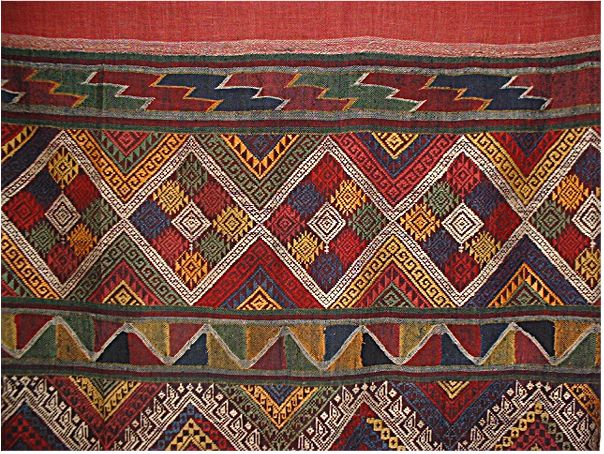
Notice the various serpentine forms. In southeast Asia the water snake (naga) communicates between the world of the living and that of the Gods. The lower part of the closeup shows representations of serpent heads along the design; similar motifs can be seen along the roof edges of temples in Thailand.
While details differ from one specimen to another, there is a clear layout similarity between them. Here is another T'ai Hun skirt,
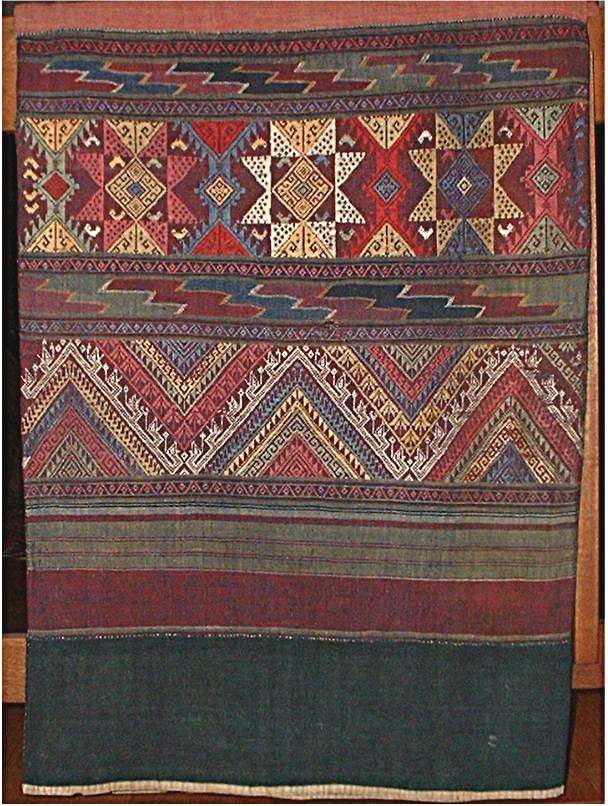
Notice how the first and third decorated bands are both tapestry, the second and fourth are both supplementary weft brocading, and the fourth is closely related to the analogous panel in the first specimen. There are small birds in the second decorated band, shown in the next image.
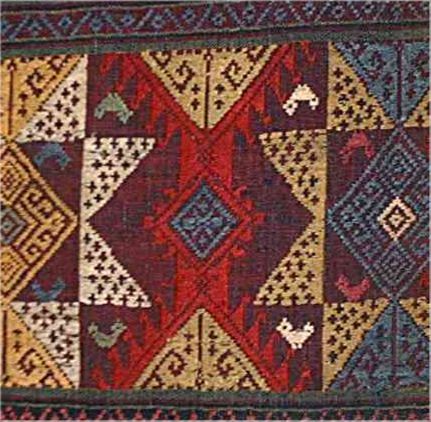
As in nearly evey culture, birds are highly significant icons in southeast Asia.
Here is a third T'ai Hun skirt, shown as a full view and with some closeups for detail.
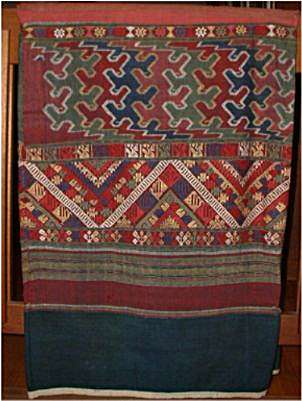
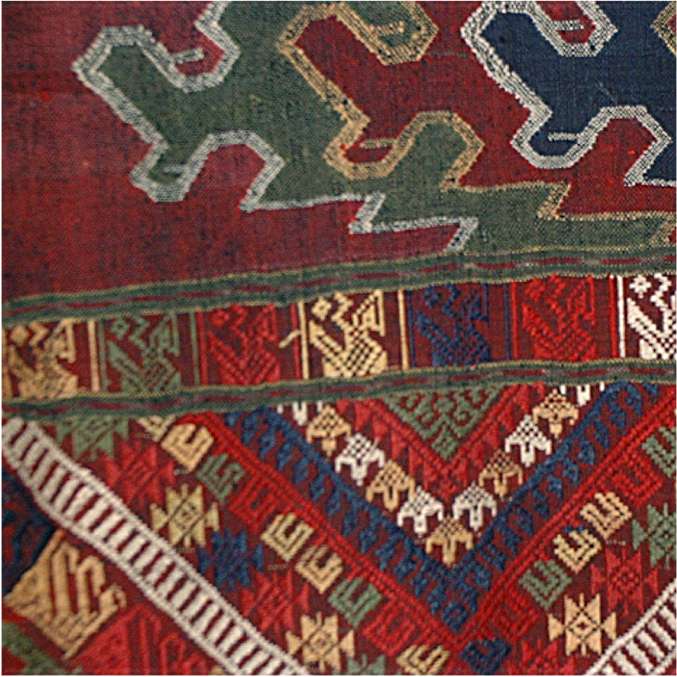
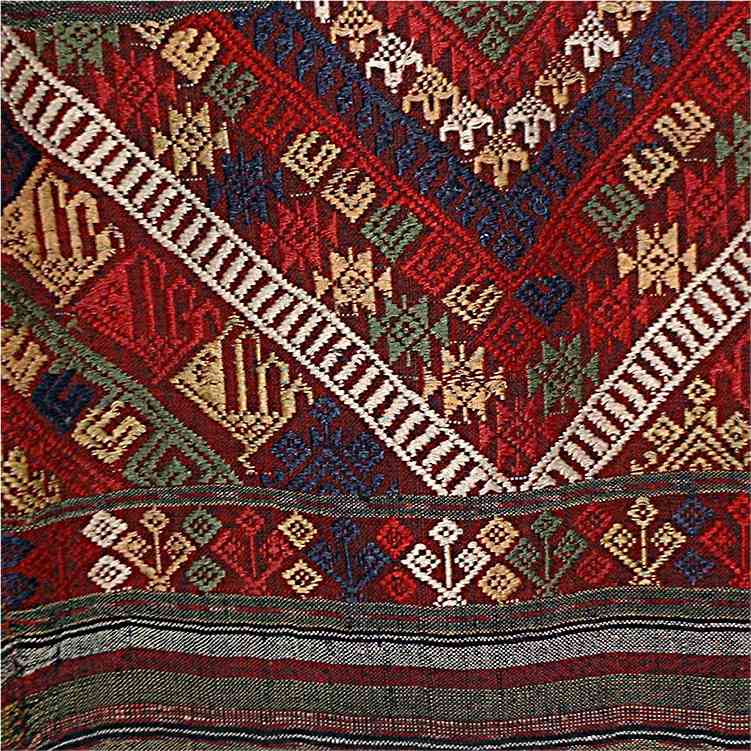
Again, you can see what are probably bird figures. This skirt has several unusual characteristics. One is the presence of what appear to be floral motifs, another is the drawing of the "zigzag" (serpentine) elements in the largest supplementary weft panel, and a third is the "cloudband" motifs in the uppermost tapestry panel.
Perhaps the most striking of the T'ai textiles are those done by the T'ai Daeng. The next image is a T'ai Daeng skirt, missing one of the cotton edge panels, opened up and mounted. Skirts of this general layout are worn to the funeral of the mother-in-law, and passed on to daughters-in-law for their use.
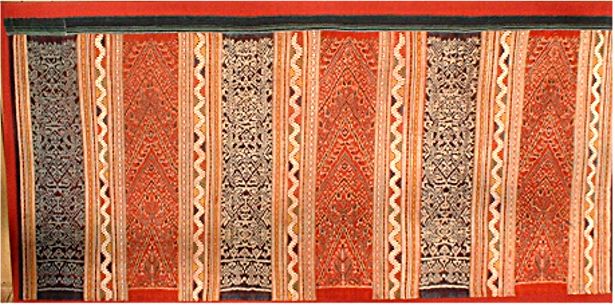
The wide bands are weft ikat of extraordinary sophistication, and the narrow bands separating them are supplementary weft brocading. The detail is much too fine to be seen in a full view, but the closeup will give you more of a feel for it.
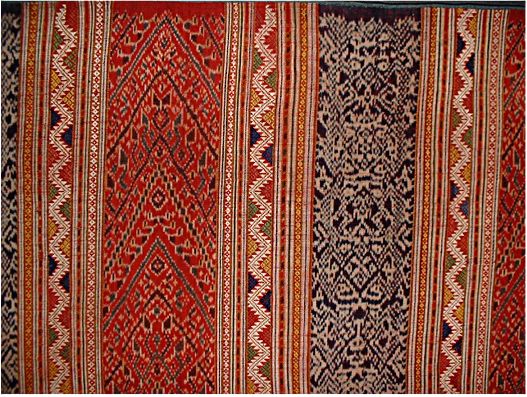
The various serpentine forms are obvious enough. The ikat panels are the truly remarkable element in this (and many other T'ai Daeng) skirts.
For closers, I'll show you a T'ai Daeng shaman's head cloth (or shoulder cloth; there is some lack of unanimity about this is the published accounts). The decoration in this is entirely done in silk supplentary weft. The ground cloth is cotton.

In addition to the bird-like images seen on some skirts, there is also a mythical long-nosed lion and various representations of human forms. The closeups let you see more detail.
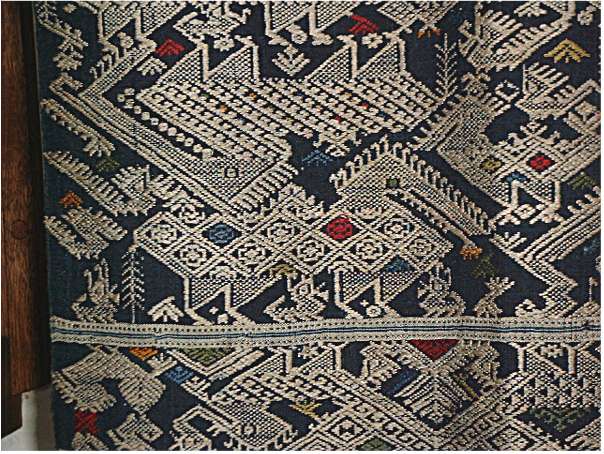
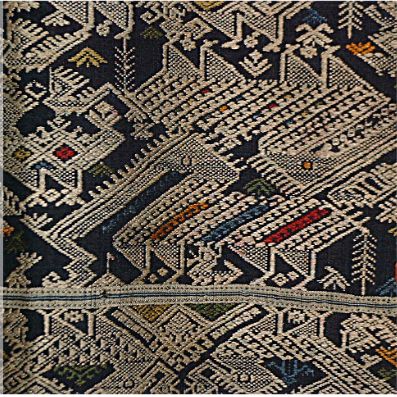
I have nothing sophisticated to say about these textiles. They are offered here as evidence that they deserve more attention from collectors. Incidentally, all those shown here are probably 19th or early 20th century. Much of the more recent production is also very well executed and reasonably priced, although some have garish colors.
Some points to ponder: Why are floral motifs so rarely seen in Laotian T'ai textiles? There is clear evidence of diffusion of motifs, layouts and techniques from neighboring regions, where flowers figure are as prominently as they do in most textile art. The absence of tapestry weaving in the textiles of all the Laotian T'ai groups except the T'ai Hun seems surprising to me; this is a fairly fundamental technique. The "stray" spots of color, generally interpreted as distracting elements, remind us that similar techniques are used to distract the Evil Eye of Envy (Nazar) in western and central Asia. The large diamond forms are also reminiscent of nazarlik motifs; at the same time, they suggest serpentine forms by being attached rather than isolated.
For those interested in reading more about Laotian textiles, here is a little bibliography.
Gittenger and Lefferts, Textiles and the Tai Experience in Southeast Asia. Catalog of the 1992 exhibition, with excellent examples, well illustrated, and lots of ethnographic information.
Maxwell, Textiles of Southeast Asia - Tradition, Trade and Transformation. Probably the best source that includes insular and mainland southeast Asian textiles in a single volume.
Howard, Textiles of Southeast Asia - An Annotated & Illustrated Bibliography. A portal to virtually everything published (even in newspapers) about southeast Asian textiles up to 1993.
Cheesman, Lao Textiles - Ancient Symbols~Living Art. Survey of Laotian weavings; rather sketchy text and poor photographic reproduction.
Fraser-Lu, Handwoven Textiles of South-East Asia. Survey of southeast Asian textiles.
Connors, Lao Textiles and Traditions. Small, inexpensive book focusing on the traditional roots of modern Laotian production.
Howard, Wattanapun and Gordon, Traditional T'ai Arts in Contemporary Perspective. Nice survey of the
arts of the T'ai speaking peoples.